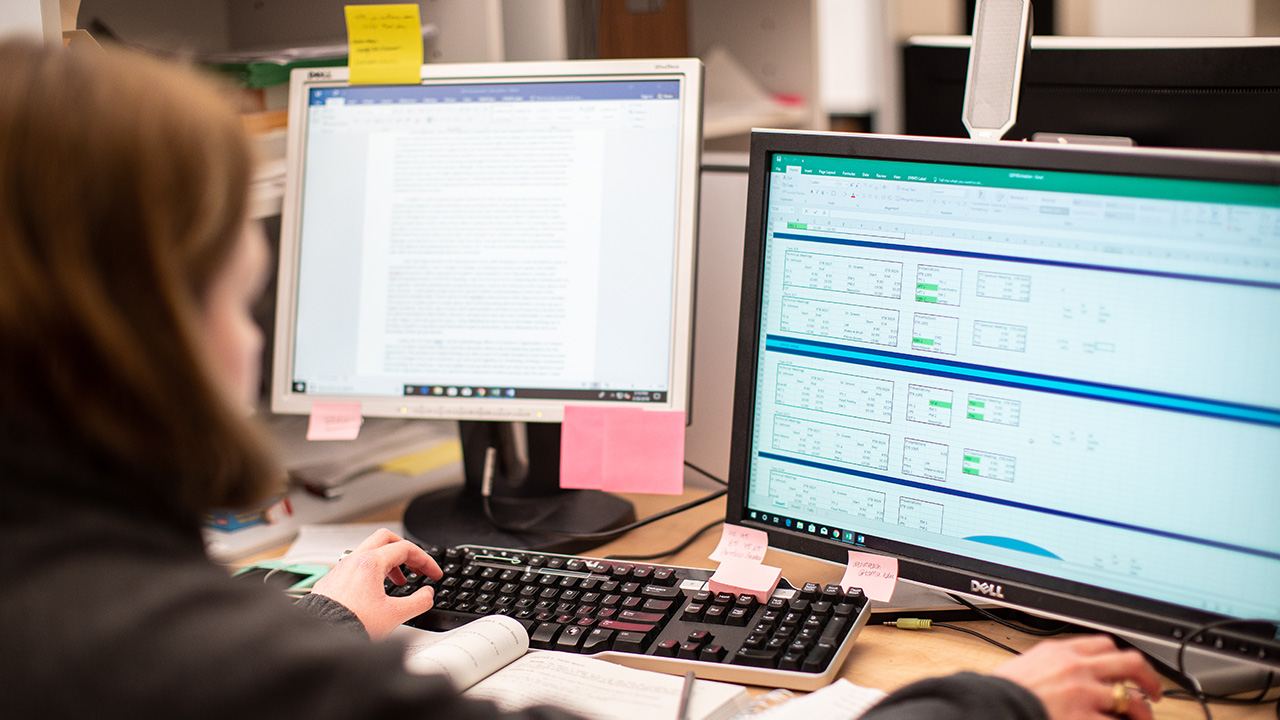Looking for academic support?
Our learning center in the Zachry Engineering Education Complex is dedicated to helping students in the College of Engineering succeed!

The goal of research is to publish the findings. Like a photographer sharing their work on photosharing platforms, one gets criticism and applause for the content. Based on the comments, the next one will be a better one. However, research papers are not as easy as uploading a photo since a research project involves months, if not years, of hard work. In the end, it is not easy to put together all the data and details from day one, especially when you must make the paper presentable with a beautiful story using your data to connect all dots. The factors contributing to success and failure of a paper mostly depend on research type and domain. Only a handful of steps can be generalized, but here are five of the most important steps in writing a research paper.
1. Observing the trends
Most projects begin with a literature survey. There are a particular set of renowned authors whose publications become part of primary references to your work. Along with the technical content in those papers, it is important to take note of the author’s perspective. As technology improves, new techniques and approaches are used for the latest designs. Learn how the author defends their previous work and presents new technology. This helps in getting ideas while writing your paper because it is all about creating a story around your data.
One more thing to do when starting a literature survey is to make a list of conferences and journals along with the core technique used in publications related to your work. Next, observe the topics that stay relevant versus becoming obsolete through the years. This helps you avoid techniques that are long gone.
2. Create an outline
Based on your research focus and the ideas you are putting into your work, create an outline of the paper. Most journals and conferences have a dedicated format provided as a template. Use that template and make a brief note of what is supposed to go in each section of the paper. Then as you progress, make subsections and repeat the process of writing a short description. This streamlines your ideas and keeps you on track with the correct set of measurements or simulations.
3. Writing and rewriting
The first draft is always bad. A good article has an uncountable number of drafts. From the day you have some initial data, start a draft. It includes creating plots, pictures of your hardware or a flow chart of software steps. As you keep reading your drafts you will get new ideas. Comparing the obtained data with literature prompts you to get more data or design a new set of experiments. If you wait until you’ve collected all the data, you may not be able to go back to your first setup as it may take too long to run the software again or you may have changed multiple things.
4. Internal review
Everyone has their own perspective. By reviewing your drafts with technical and non-technical people, you face different types of questions. Some may be very basic, but it is important to try and answer them. From formatting to the technical content, reviewing your draft thoroughly makes your life easier during the official review stage. As you publish more papers, and designated reviewers of journals and conferences see less edits in your paper, you build credibility in the professional community.
5. Deadlines
Finally, making a note of deadlines and having a copy of them in your office, home, lab and mobile calendars is necessary. Not being able to meet deadlines and asking for extensions doesn’t look good on you or your team. Target multiple journals and conferences, since things can go wrong and you must be prepared for it. By reviewing the progress and deadlines, you can align your priorities. Sometimes a conference may not need as much data as a journal publication. If something delays your work, you can submit to a conference while continuing to get more data for a journal.
In the end, it is a fact that writing a research paper is stressful. Like any other process, it has deadlines, things can go wrong and motivation is not always there to push you. Creating a streamlined process and defining the steps in the beginning can reduce some of the panic. Using the steps described above, writing short descriptions, and planning what to present in different scenarios as a backup plan will help. It is also important to continuously remind yourself of the final goals and check if you are converging toward them. There are multiple resources online to help you go through these and many other steps. If stressed, take a break, have a good time with friends or sharpen your creativity with one of your hobbies and make use of available resources on campus, then get back to your plan. The happiness from publishing a research paper will surpass all the stress and struggle to get to that point.

Electrical Engineering
If you found this blog post interesting, you may consider reading “The importance of a strong support system in graduate school” and “Treat your graduate school journey as a full-time job.”
